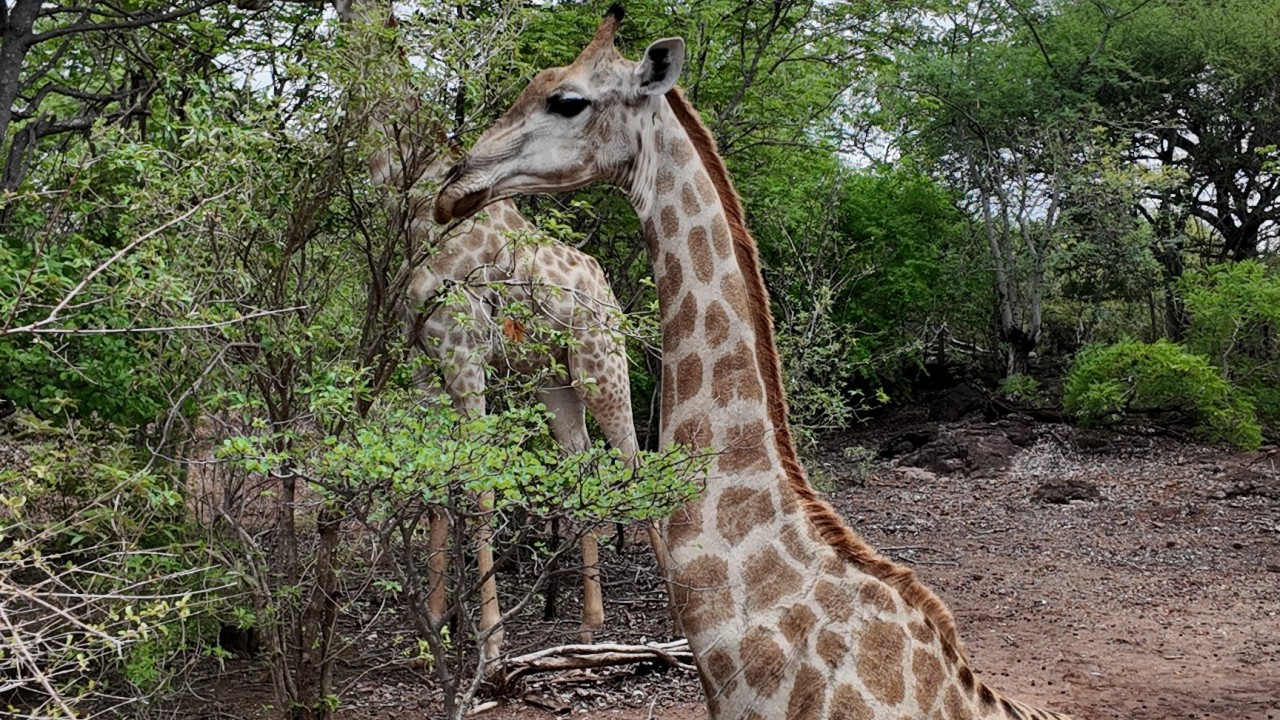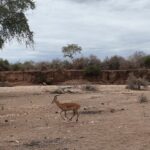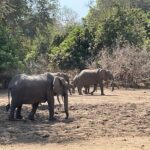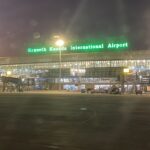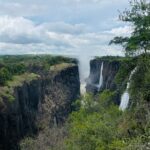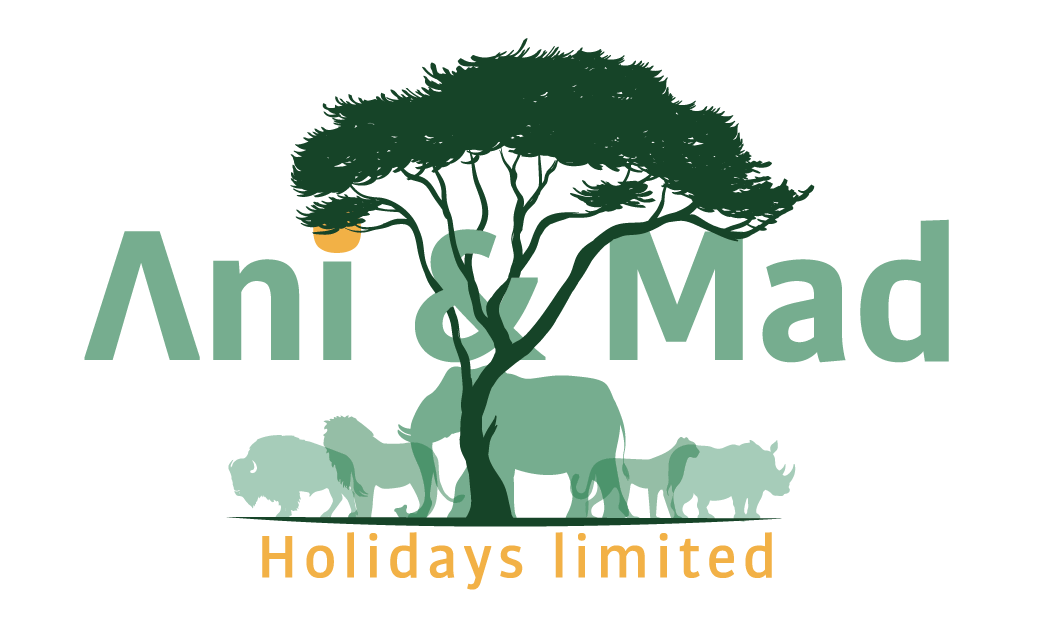Planning your first trip to Zambia? You’re in for a truly unforgettable experience! Zambia is a land of breathtaking natural beauty, rich cultural heritage, and warm, welcoming people. Whether you’re interested in witnessing the mighty Victoria Falls, going on a wildlife safari, or exploring vibrant cities like Lusaka and Livingstone, Zambia offers something for every kind of traveler. But like any new destination, it helps to be prepared. In this guide, we’ll walk you through essential travel tips to help make your first trip smooth, safe, and packed with amazing memories.
Visa Requirements and Entry Information
Before packing your bags, make sure you understand Zambia’s visa rules. Most visitors can get a visa on arrival or apply for an e-visa in advance through the Zambia Immigration website. It’s a quick and simple process, and fees vary based on your nationality.
If you’re also planning to visit nearby countries like Zimbabwe or Botswana, consider applying for the KAZA Univisa. This special visa allows multiple entries between Zambia and Zimbabwe and even a day trip to Botswana via Kazungula.
Make sure your passport is valid for at least six months from your date of entry and has at least two blank pages for stamps. Immigration officers may also ask for your return ticket and proof of accommodation, so keep those handy.
Before you travel, remember to check in for your flight in advance and check in with family or friends to let them know your plans.
Best Time to Visit Zambia
Zambia can be visited year-round, but the best time depends on what you want to experience. The dry season, from May to October, is the most popular for travel — especially for wildlife viewing. During this time, animals gather around waterholes, and vegetation is sparse, making them easier to spot in national parks like South Luangwa and Lower Zambezi.
Zambia’s dry season is divided into the cool dry season (May to August), characterized by lower temperatures and little rainfall, and the hot dry season (September to October/November), when temperatures rise before the rains return. Checking the weather before your trip is important to plan activities and ensure the best experience.
If you’re planning to see Victoria Falls at its most powerful, aim for the end of the rainy season (March to May). The falls are truly thunderous then, but the mist can sometimes obscure the view. For a clearer view and better activities like the Devil’s Pool, the dry months of August to October are ideal.
The rainy season (November to April) brings lush landscapes and fewer tourists, but some roads may be impassable, and certain safari camps close temporarily. However, it’s a great time for birdwatching, especially with migratory species visiting Zambia.
Health and Safety Tips
Your health and safety should be a top priority when visiting a new country. For Zambia, it’s important to take a few precautions to ensure a stress-free journey, especially when planning for international travel.
First, check with your doctor about recommended vaccinations. Common ones include yellow fever (if you’re coming from a risk country), typhoid, hepatitis A and B, and tetanus. Malaria is present in Zambia, especially in rural and lowland areas, so bring mosquito repellent and consider anti-malarial medication.
Travel insurance is a must — it can cover unexpected health issues, travel delays, or lost luggage. Many good policies also extend coverage to family members in case of emergencies, such as medical evacuation or support for dependent children. Hospitals in major cities like Lusaka offer decent care, but remote areas may lack advanced facilities, so it’s best to be prepared.
In terms of safety, Zambia is generally peaceful and the people are friendly. However, as in any country, stay aware of your surroundings, avoid walking alone at night, and keep valuables secure. When exploring wildlife areas, always follow your guide’s instructions.
If you’re new to international travel, it can feel daunting, so be sure to follow international travel tips and prepare for health and safety abroad.
Currency and Payments
Zambia uses the Zambian Kwacha (ZMW). While major cities like Lusaka and Livingstone have plenty of ATMs, it’s a good idea to carry some cash, especially if you’re heading to rural areas or small towns where card machines may not be available.
Credit and debit cards are accepted in hotels, restaurants, and large shops, but cash is king at markets, roadside stalls, and smaller businesses. Be sure to notify your bank before traveling to avoid any card issues abroad.
Mobile money services, like Airtel Money and MTN Money, are also widely used in Zambia for local transactions. If you’re staying a while, consider getting a local SIM card to access these services.
It’s also wise to exchange foreign currency at official bureaus or banks, as they offer better rates and more security than street money changers. Comparing rates at different bureaus or banks can help you find cheaper options and save money on currency exchange. Always be mindful of how much you spend during your trip to manage your travel expenses effectively.
Language and Communication
One of the easiest parts of traveling in Zambia is communication — English is the official language, and it’s widely spoken in cities, tourist areas, and by most service providers. This makes it easier for first-time visitors to ask for help, read signs, and navigate their way around.
That said, Zambia is home to over 70 local languages, with Bemba, Nyanja, Tonga, and Lozi among the most commonly spoken. Learning a few simple greetings in the local language — like “Muli bwanji?” (How are you? in Nyanja) — can go a long way in connecting with locals and showing respect for their culture.
For internet and calls, you can buy a local SIM card from providers like Airtel or MTN at the airport or any mobile shop. Data is affordable, and network coverage is good in urban areas, though it may be spotty in remote regions. Free Wi-Fi is available at many lodges, cafes, and hotels, but speeds can vary.
Getting Around Zambia
International flights arrive in Lusaka and Livingstone, so travelers should be aware of baggage policies and boarding procedures to ensure a smooth experience.
Zambia is a large country, so getting around can take some planning — but it’s definitely manageable. For long distances, domestic flights are a time-saving option. Airlines like Proflight Zambia connect major cities and safari destinations, including Lusaka, Livingstone, Mfuwe, and Lower Zambezi.
If you prefer to explore by road, you can rent a car in major cities. However, be aware that roads outside of urban areas may be in poor condition, especially during the rainy season. A 4×4 vehicle is often recommended for travel to remote lodges or national parks.
Navigating public transportation in a big city like Lusaka can be confusing, and it’s easy to lose yourself in the hustle and bustle if you’re not prepared. Taxis and ride-hailing apps like Yango are common in Lusaka and Livingstone. Always agree on the fare before starting your trip if you’re using a regular taxi.
Minibuses and long-distance buses are cheap and widely used by locals, but they can be crowded and may not follow strict schedules. For convenience and comfort, many travelers opt for private transfers arranged by hotels or tour operators.
At border crossings, especially if you’re using the KAZA Univisa, ensure your documents are ready, and be patient as queues can be long at peak times.
What to Pack for Zambia
A comfortable, waterproof backpack is essential for organizing your belongings and making travel in Zambia easier.
Packing smart is key to a comfortable and enjoyable trip to Zambia. The climate can vary depending on the region and season, so it’s best to come prepared.
For the dry season, pack light, breathable clothing in neutral colors — especially if you’ll be on safari. Long sleeves and trousers help protect against mosquitoes and the sun. During early mornings and evenings, it can get chilly, so bring a light jacket or fleece.
In the rainy season, a light raincoat, quick-dry clothes, and waterproof footwear are useful. Sturdy walking shoes or boots are a must if you plan to hike or explore national parks.
Other essentials include:
- Sun protection: hat, sunglasses, sunscreen
- Insect repellent (preferably with DEET)
- Reusable water bottle
- Power adapter (Zambia uses UK-style plug, Type G, 230V)
- Small medical kit with basic supplies and any personal medication
- Photocopies of travel documents for backup
And don’t forget your camera or smartphone — Zambia’s landscapes and wildlife are incredibly photogenic!
Before you leave home, double-check your packing list to ensure you have all the essentials for your trip.
Accommodation Options in Zambia
When planning your trip to Zambia, a vibrant foreign country in south central Africa, you’ll find a wide variety of accommodation options to suit every style and budget. If you’re embarking on a backpacking trip, hostels and guesthouses are a fantastic choice. Not only are they super cheap, but they also offer a great resource for meeting fellow travelers from around the world. Many hostels provide communal spaces, free Wi-Fi, and organized activities, making it easy to swap travel tips and plan adventures together.
For those seeking a bit more comfort, Zambia’s cities and tourist hotspots feature mid-range hotels and charming guesthouses, often with amenities like on-site restaurants, reliable Wi-Fi, and helpful staff who can assist with booking tours or transportation. If you want to splurge, luxury lodges and safari camps offer an unforgettable experience, complete with stunning views, gourmet meals, and guided excursions into the wild.
No matter your budget, it’s wise to book ahead during the busy dry season, especially if you’re visiting popular destinations. Whether you’re traveling solo, with friends, or as a family, Zambia’s diverse accommodation scene ensures you’ll find the perfect base for your African adventure—without spending so much money that you can’t enjoy the rest of your trip.
Navigating Zambia’s Big Cities
Exploring Zambia’s big cities, like Lusaka and Livingstone, can feel like a daunting experience for first time travelers, but with a little preparation, you’ll find these urban centers both welcoming and full of life. Transportation is straightforward: taxis are widely available and can be arranged through your hotel or hailed on the street, while local buses offer a super cheap way to get around if you’re feeling adventurous. For a more immersive experience, consider joining a walking tour—these are a fun way to explore the city, learn about its history, and discover hidden gems.
Before you set off, it’s a smart move to purchase travel insurance for your trip abroad. This will give you peace of mind in case of unexpected events, from lost luggage to medical emergencies. Downloading a translation app can also be super helpful, especially if you want to chat with locals or navigate signs in Zambia’s many languages. Remember, Zambia—formerly known as Northern Rhodesia—has a rich cultural heritage, and its cities are filled with fascinating museums, bustling markets, and historical landmarks just waiting to be explored.
Cultural Etiquette and Local Customs
Zambia is known for its warm hospitality, and showing respect for local customs will enhance your travel experience. A friendly greeting is important — a simple “Hello” or “How are you?” (or “Muli bwanji?” in Nyanja) is always appreciated. Shaking hands is common, and you may notice locals using both hands as a sign of respect.
When visiting rural areas or traditional communities, modest clothing is encouraged. Women should avoid short shorts or skirts, especially in villages or religious sites. In urban areas, the dress code is more relaxed, but still generally conservative.
Tipping is not mandatory, but it’s a kind gesture and appreciated in tourist services. In restaurants, a 10% tip is typical. Safari guides, drivers, and hotel staff also welcome tips for good service.
Always ask before taking photos of people, especially in villages or markets. Most will agree, but it’s respectful to request permission first.
Lastly, take time to listen and learn — Zambians are proud of their culture and happy to share stories, traditions, and knowledge with curious travelers.
Must-Visit Attractions
Zambia is full of incredible places to explore, especially for nature lovers and adventure seekers. Here are some must-visit highlights for your first trip:
- Victoria Falls: Known locally as Mosi-oa-Tunya (“The Smoke That Thunders”), this UNESCO World Heritage Site is one of the largest and most spectacular waterfalls in the world. Visit from both the Zambian and Zimbabwean sides if possible, and don’t miss activities like bungee jumping, microlight flights, or a swim in the Devil’s Pool.
- South Luangwa National Park: Often called the birthplace of the walking safari, this park is perfect for spotting elephants, leopards, giraffes, and over 400 bird species. It’s one of Africa’s top safari destinations, especially during the dry season.
- Lower Zambezi National Park: Located along the Zambezi River, this park offers stunning scenery and unique activities like canoe safaris, boat cruises, and fishing trips. It’s less crowded, making it a peaceful alternative.
- Lusaka: The capital city is a hub for culture and commerce. Visit Lusaka National Museum, local craft markets, or enjoy Zambian cuisine at traditional restaurants. Trying local food is a highlight here—sample authentic Zambian dishes and experience the unique flavors and culinary traditions that make Lusaka a great destination for food lovers.
- Livingstone: The adventure capital of Zambia. Besides Victoria Falls, it’s a great base for cultural tours, wildlife encounters, and river cruises.
Zambia has so much more to offer, from Lake Kariba and Siavonga to hidden gems like Kasanka National Park and Bangweulu Wetlands — ideal for return visits!
Meeting Fellow Travelers in Zambia
One of the most enjoyable parts of traveling abroad is connecting with fellow travelers, and Zambia is a fantastic place to do just that. Whether you’re visiting iconic destinations like Victoria Falls or exploring the wild beauty of the Luangwa Valley in the heart of the Zambezi Basin, you’ll find plenty of opportunities to meet new friends. Social hostels and guesthouses are perfect for striking up conversations, sharing stories, and even planning day trips together.
Joining a walking tour or group excursion is another great way to bond with other travelers while discovering the country’s unique sights and sounds. If you’re traveling solo, don’t hesitate to join group tours or activities—these are not only fun but also a great resource for safety and companionship. Zambia’s friendly atmosphere and diverse range of destinations make it easy to connect with like-minded adventurers, ensuring your trip is as memorable as it is exciting.
Overcoming Common Travel Challenges
Traveling to a new country like Zambia can come with its share of challenges, but with a few unique travel tips, you can turn potential stress into a smooth and enjoyable trip. Staying organized is the most important thing—keep your itinerary, tickets, and important documents together in your carry on bag so you’re always prepared, even if your checked luggage goes missing. This also helps you save room for souvenirs and essentials you might pick up along the way.
Since English is the official language, communicating is generally easy, but learning a few local phrases or customs can be super helpful and show respect for Zambia’s rich culture as a Christian nation. When exploring the country’s stunning river valleys or planning a visit to Lake Kariba, research transportation options in advance to avoid last-minute hassles. By staying organized and open to new experiences, you’ll be able to fully enjoy everything this beautiful country has to offer—whether you’re relaxing by the water, exploring national parks, or discovering the vibrant life of Zambia’s cities.
Bonus Tips for an Unforgettable Trip
To truly make the most of your trip to Zambia, here are a few extra tips:
- Support local businesses: From handmade crafts to locally-run lodges and eateries, choosing local helps boost communities and gives you a more authentic experience.
- Practice eco-friendly travel: Respect wildlife, avoid single-use plastics, and follow park rules. Many national parks and lodges in Zambia are committed to sustainable tourism.
- Book guided tours when possible: Local guides offer valuable insights into Zambia’s wildlife, history, and culture that you won’t find in guidebooks. Whether it’s a walking safari or a cultural village tour, these experiences often become the highlight of a trip.
- Stay open and flexible: Zambia moves at a slower pace, and plans may change. Embrace the flow — sometimes the unexpected turns out to be the most memorable.
Conclusion
Zambia is a destination full of heart, adventure, and unforgettable moments. For first-time travelers, the key is to come prepared but also to stay curious and open to discovery. Whether you’re tracking lions on safari, watching the mist rise from Victoria Falls, or chatting with locals in a bustling market, Zambia has a way of surprising and inspiring every traveler. So pack your bags, bring your sense of wonder, and get ready to explore one of Africa’s hidden gems.

